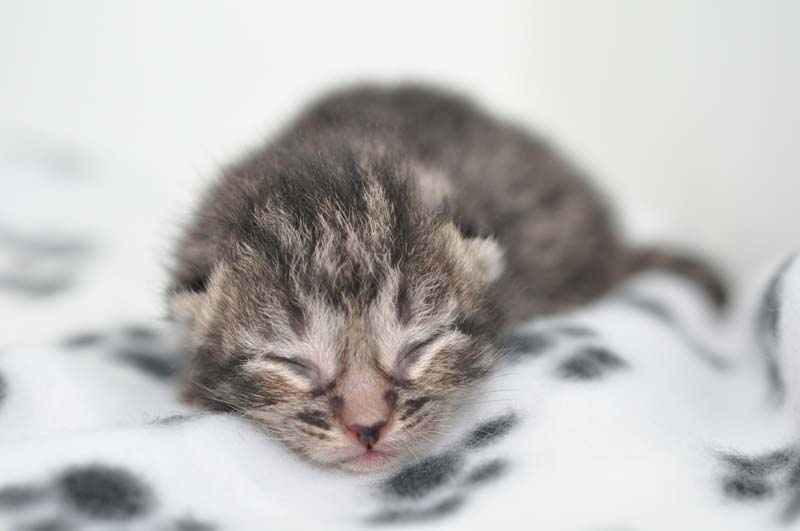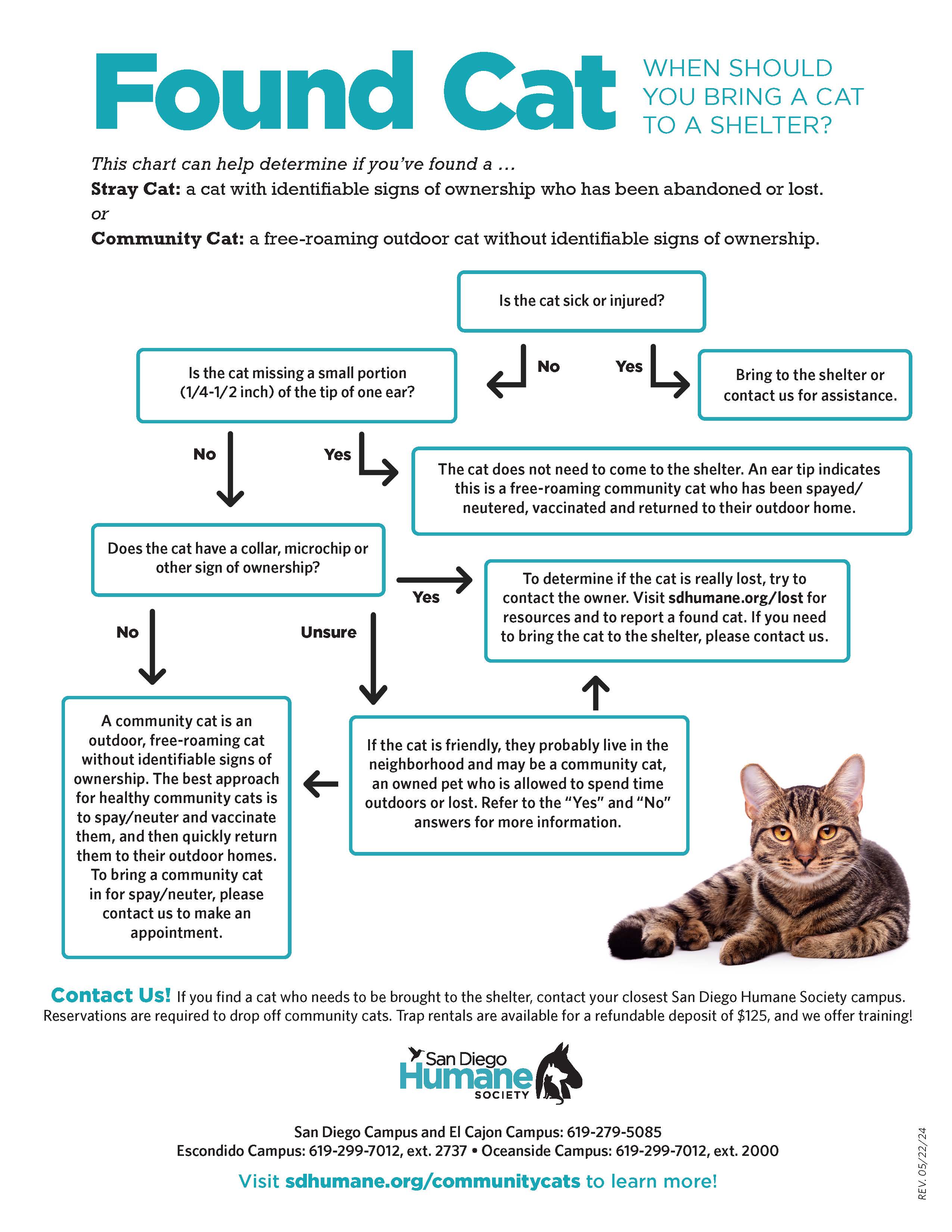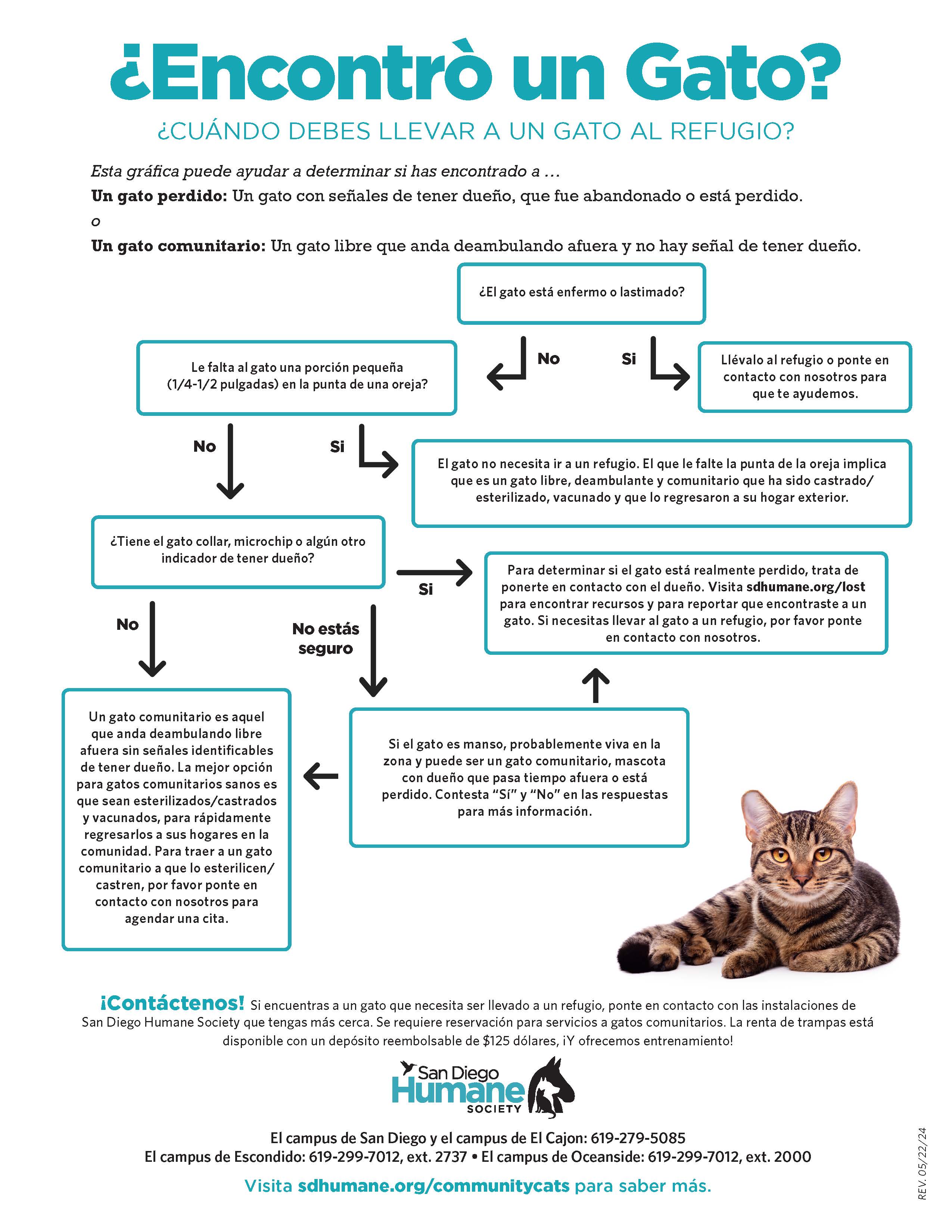Found a Cat
Found Kittens
When should you bring kittens to a shelter?
If you’ve found kittens who are being cared for by their mother and seem healthy, please leave them with their mother. If the mother or kittens appear sick, injured or in danger, please bring them to one of our locations or call us at 619-299-7012 for additional assistance. For more information about whether kittens should be brought to the shelter, please visit our Found Kitten Guide below for instructions.
When should you bring a cat to a shelter?

If you find a cat who appears sick, injured or in immediate danger*, please bring them to the animal shelter associated with the jurisdiction where the cat was found.
Cats require a different approach than dogs and other small pets for the following reasons:
- Only 3% of stray cats entering animal shelters are reunited with their owners.
- Rates of non-live outcomes for cats in California continues to be higher — almost 17% compared to the national rate of 11%, based on 2024 data.
The best outcome for healthy community cats is to return them to their outdoor homes. For these reasons, we take a comprehensive approach to reunite lost cats with their families. We use technology, social media and community networks to increase the likelihood of family reunions rather than encouraging finders to bring healthy cats to shelters. As we work together to improve the return-to-owner rate, it is essential for owners to ID and microchip their pets (and keep the information up to date!).
Is That Cat Really Lost?
How can you determine if a cat is a lost pet, one who just spends time outdoors each day or a free-roaming community cat?
- If a cat is wearing a collar and tag, they likely belong to someone in your neighborhood.
- Call the phone number on the tag and ask if the cat is lost.
- If you meet a cat who is missing a small portion (1/4-1/2 inch) of the tip of one ear, this indicates the cat has been spayed/neutered and is a free-roaming community cat.
- No action is necessary unless the cat appears injured, sick or in immediate danger.*
- If the cat is friendly but doesn’t have identification or a tipped ear, they probably live in the neighborhood and may be a community cat, lost or allowed to spend time outdoors.
- Note the cat’s description and location and attempt to locate an owner by following these tips on what to do if you find a lost or stray pet.
*Immediate danger refers to a drastic change in a cat’s environment that puts them at risk of imminent injury or death. If you are unsure whether a community cat is in immediate danger, please contact us.





